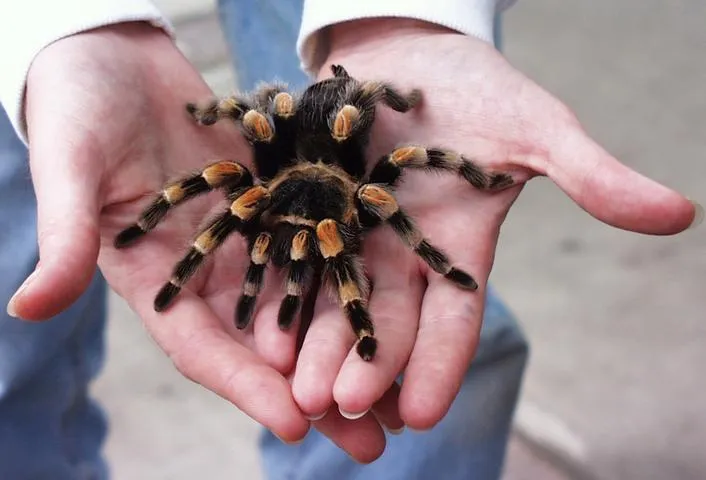Mexican Red Knee Tarantula Care Guide
The Mexican Red Knee Tarantula (Brachypelma hamorii) is a popular pet due to its striking appearance, docile temperament, and manageable care requirements. This comprehensive guide will walk you through every aspect of caring for your Mexican Red Knee Tarantula, from choosing your spider to maintaining its health and well-being. With the right knowledge and dedication, you can provide a thriving environment for your fascinating pet, ensuring a long and fulfilling life. This guide is designed to be your go-to resource, offering practical advice and detailed information to make tarantula ownership a rewarding experience. Proper care is not just about survival, but about enriching the life of this amazing creature, allowing you to observe its unique behaviors and appreciate its beauty.
Choosing Your Mexican Red Knee Tarantula
Selecting a healthy Mexican Red Knee Tarantula is the first crucial step in responsible pet ownership. Look for a tarantula that is alert, active, and has a plump abdomen. Avoid spiders that appear sluggish, have a shriveled abdomen (which can indicate dehydration or starvation), or exhibit any signs of injury or illness. The spider should have all its legs, and its fangs should be intact. Consider the spider’s size in relation to its age; younger tarantulas are typically more fragile, while adults can be easier to care for. Research reputable breeders or pet stores with experience in tarantulas, and don’t hesitate to ask questions about the spider’s origin, age, and feeding history. A healthy start sets the foundation for a healthy life.
Where to Buy Your Tarantula
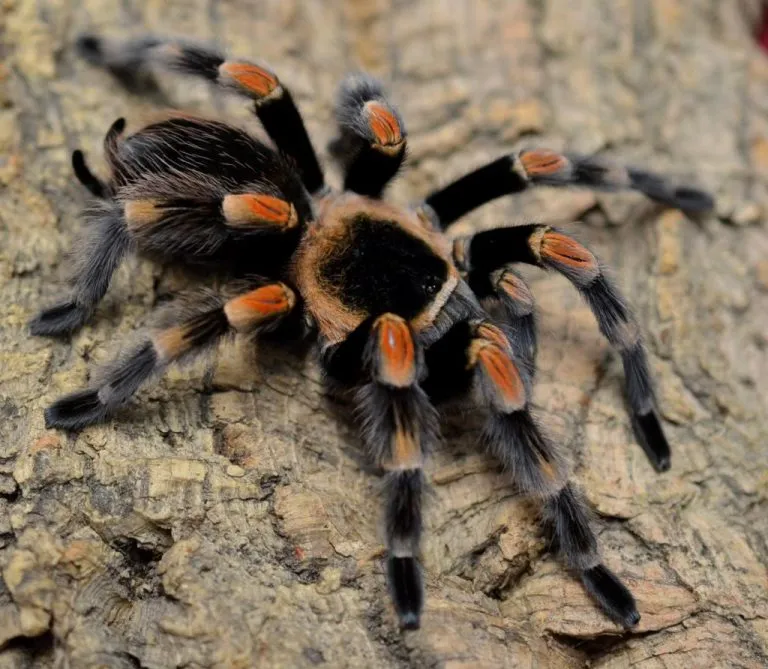
Choosing where to buy your Mexican Red Knee Tarantula is an important decision. Reputable breeders are often the best source, as they specialize in tarantulas and can provide valuable information about their origin, health, and care. Local pet stores can also be a good option, but ensure they have experience with tarantulas and maintain proper care standards. Online marketplaces offer a wide selection, but it’s essential to research the seller and read reviews to ensure they are trustworthy. Always prioritize the health and well-being of the spider when making your purchase, and be prepared to ask questions about their background and health. By selecting a reputable source, you increase the chances of bringing home a healthy and well-cared-for tarantula.
Things to Consider Before Buying
Before acquiring a Mexican Red Knee Tarantula, consider the commitment involved. Tarantulas can live for many years, with females often living for 20-30 years. Ensure you have the time, resources, and space to provide proper care throughout its lifespan. Research the specific care requirements of the Mexican Red Knee, including housing, feeding, and environmental needs. Consider the cost of the tarantula itself, along with the ongoing expenses of substrate, food, and enclosure upkeep. Finally, determine if you’re comfortable handling and interacting with a tarantula, and if you have any concerns or allergies. Thorough planning is essential for a successful and enjoyable tarantula ownership experience.
Housing Your Mexican Red Knee Tarantula
Providing a proper enclosure is crucial for the health and well-being of your Mexican Red Knee Tarantula. The enclosure should be secure, escape-proof, and provide the necessary space and environmental conditions for the spider to thrive. The size of the enclosure should be appropriate for the tarantula’s size, allowing it to move freely and explore its surroundings. The type of enclosure can vary, but glass or acrylic terrariums are popular choices because they offer good visibility and ventilation. The setup should also include a proper substrate, hiding place, and water source. A well-designed enclosure mimics the tarantula’s natural habitat, reducing stress and promoting a healthy lifestyle.
Enclosure Size and Type
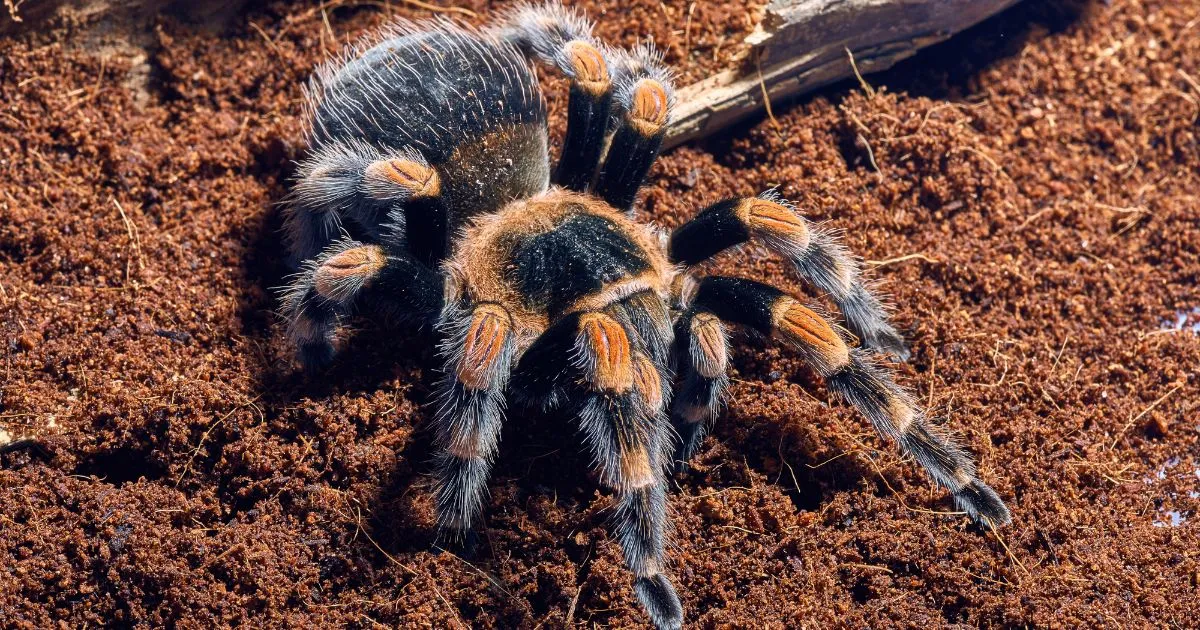
The size and type of enclosure are important considerations. A juvenile Mexican Red Knee can be housed in a smaller enclosure, such as a 5-10 gallon tank. As the tarantula grows, you’ll need to upgrade to a larger enclosure. A general guideline is to provide a space that is at least 2-3 times the spider’s leg span in width. For adult females, a 10-20 gallon tank is often sufficient. The enclosure should have a secure lid to prevent escapes, and the material should be sturdy and easy to clean. Glass or acrylic terrariums are common choices. Ensure that there is adequate ventilation to prevent the buildup of moisture and odors, but avoid drafts. A well-chosen enclosure size supports the tarantula’s natural behaviors, offering a comfortable and enriching environment.
Substrate and Decor for Your Tarantula
The substrate is the base of your tarantula’s enclosure and plays a vital role in maintaining humidity and providing a comfortable environment. A good substrate should be able to retain moisture, allow the tarantula to burrow if desired, and be non-toxic. A mix of peat moss, coconut fiber (coir), and vermiculite is a popular choice. The substrate should be several inches deep to allow for burrowing and to help maintain humidity. Decorations such as cork bark, artificial plants, and sturdy hides can enhance the enclosure and provide the tarantula with security and enrichment. Avoid sharp or abrasive materials that could injure the spider. The right substrate and décor transform the enclosure into a suitable and stimulating home.
Temperature and Humidity Requirements
Mexican Red Knee Tarantulas thrive in specific temperature and humidity ranges. The ideal temperature is between 75-85°F (24-29°C). You can use a heat mat placed on the side of the enclosure (never underneath, as it could overheat the spider) or a low-wattage heat lamp to maintain the proper temperature. Humidity should be maintained at around 60-70%. You can monitor humidity using a hygrometer. To increase humidity, mist the enclosure with dechlorinated water regularly, typically once or twice a week, or as needed. Proper temperature and humidity are essential for the tarantula’s health, molting process, and overall well-being, ensuring the spider can thrive in its enclosure.
Feeding Your Mexican Red Knee Tarantula
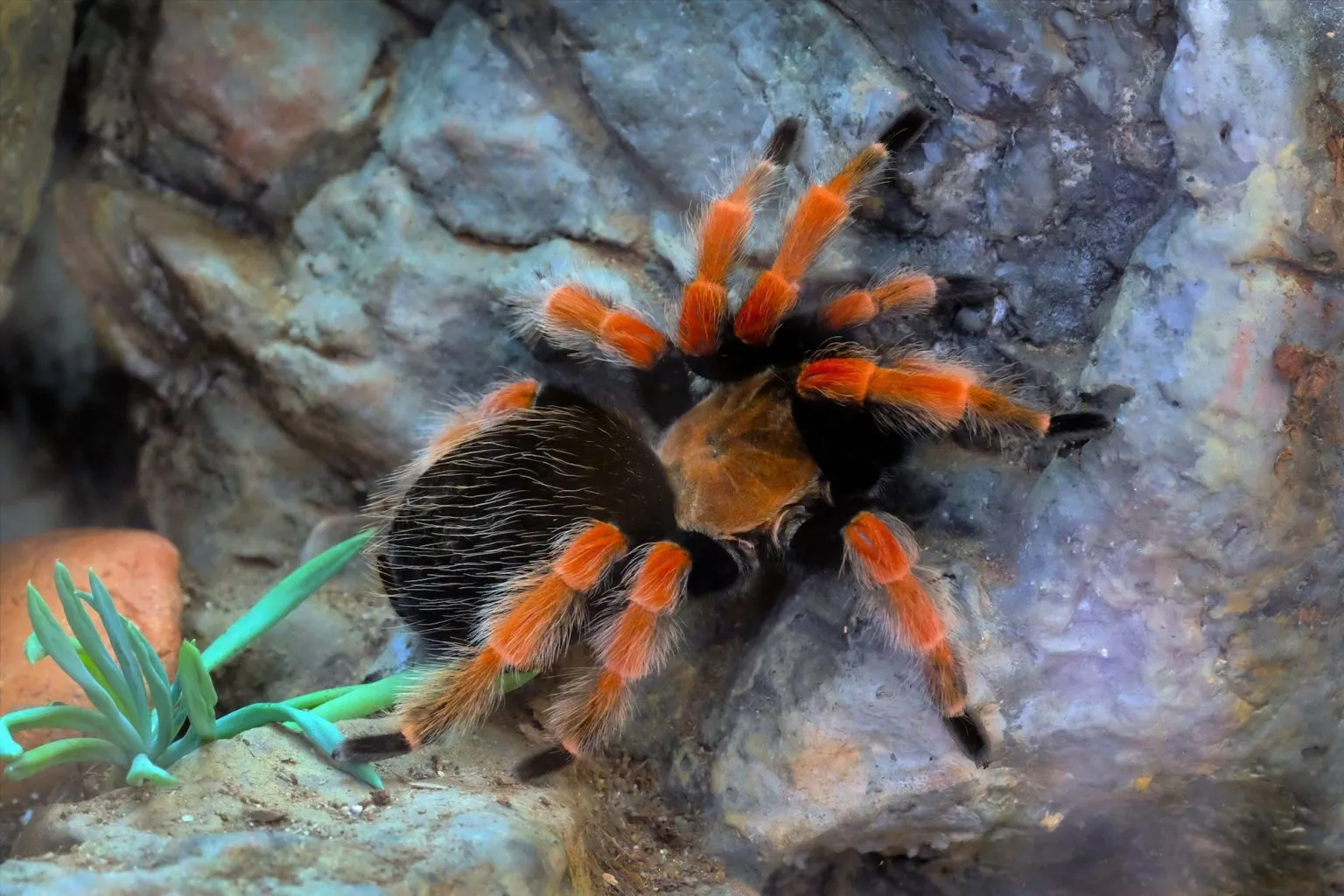
Feeding your Mexican Red Knee Tarantula appropriately is critical for its growth and health. Tarantulas are opportunistic predators, and their diet should consist of insects. The size and type of food will depend on the spider’s size and age. It’s important to provide a varied diet to ensure they receive all the necessary nutrients. Overfeeding can lead to obesity, while underfeeding can stunt growth. Observe your tarantula’s feeding habits and adjust the feeding schedule as needed. Fresh, clean water should always be available. Proper nutrition contributes to the overall health, growth, and longevity of your tarantula.
What to Feed Your Tarantula
A varied diet is best for your Mexican Red Knee Tarantula. Common food items include crickets, mealworms, dubia roaches, and locusts. The insects should be gut-loaded with nutritious food (such as vegetables and commercial insect food) for at least 24 hours before feeding them to the tarantula. This ensures the tarantula gets the benefit of the nutrients in the insect. The insects should be appropriately sized for the spider. The prey should be no larger than the spider’s body length. Avoid feeding wild-caught insects, as they may carry parasites or pesticides. Always make sure the food is fresh and of good quality. Provide a diverse and well-nourished diet for optimal health.
How Often to Feed Your Tarantula
The feeding frequency depends on the tarantula’s age and size. Spiderlings (young tarantulas) should be fed 2-3 times a week. As they grow, you can reduce the feeding frequency to once or twice a week. Adult tarantulas can be fed once a week or even less frequently, depending on their appetite and overall condition. Observe the spider’s abdomen; if it’s plump, the tarantula is well-fed. Remove any uneaten food after 24 hours to prevent mold and mites. Adjust the feeding schedule based on the tarantula’s individual needs and activity levels. Careful attention to feeding schedules ensures your tarantula receives the right amount of nutrition without overfeeding.
Watering and Hydration
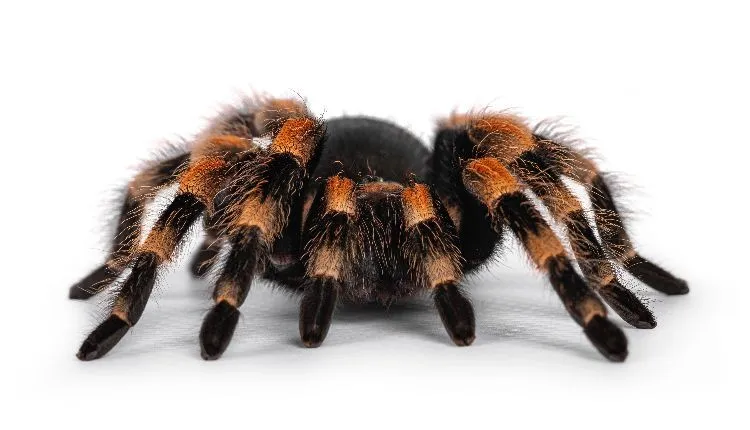
Providing fresh, clean water is essential for your tarantula’s survival. Always have a shallow water dish in the enclosure. Use a water dish that’s appropriate for the size of your tarantula and is easy to access. You can use a bottle cap for spiderlings. Refill the water dish regularly, at least every other day, and clean it thoroughly to prevent bacterial growth. In addition to the water dish, you can mist the enclosure with dechlorinated water to help maintain humidity. Make sure that the water is always clean and easily accessible. Hydration is a critical aspect of tarantula care, ensuring the spider stays healthy and properly hydrated.
Handling Your Mexican Red Knee Tarantula
Handling a Mexican Red Knee Tarantula is generally not recommended. While they are known for their relatively docile nature, tarantulas can still bite if they feel threatened or startled. Bites are not typically life-threatening to humans, but they can be painful and cause localized reactions. Handling can also stress the tarantula, which can negatively impact its health. If you must handle your tarantula (for example, for enclosure cleaning), do so with extreme caution, preferably over a soft surface, and avoid sudden movements. Always wash your hands thoroughly before and after handling. Prioritize the tarantula’s well-being and only handle it when necessary. Safe handling practices reduce the risk of injury and maintain a low-stress environment for the spider.
Do Tarantulas Bite
Yes, tarantulas can bite. They use their fangs for defense and to inject venom into their prey. Bites from Mexican Red Knee Tarantulas are not considered medically significant to humans, but they can be painful and cause localized symptoms such as pain, redness, and swelling. Avoid handling your tarantula unnecessarily, as handling increases the risk of being bitten. If bitten, wash the area with soap and water and monitor for any signs of allergic reaction or infection. While bites are uncommon, understanding the potential risks is essential. Knowing the potential risks promotes caution and safe interaction, leading to better tarantula ownership.
Molting Process
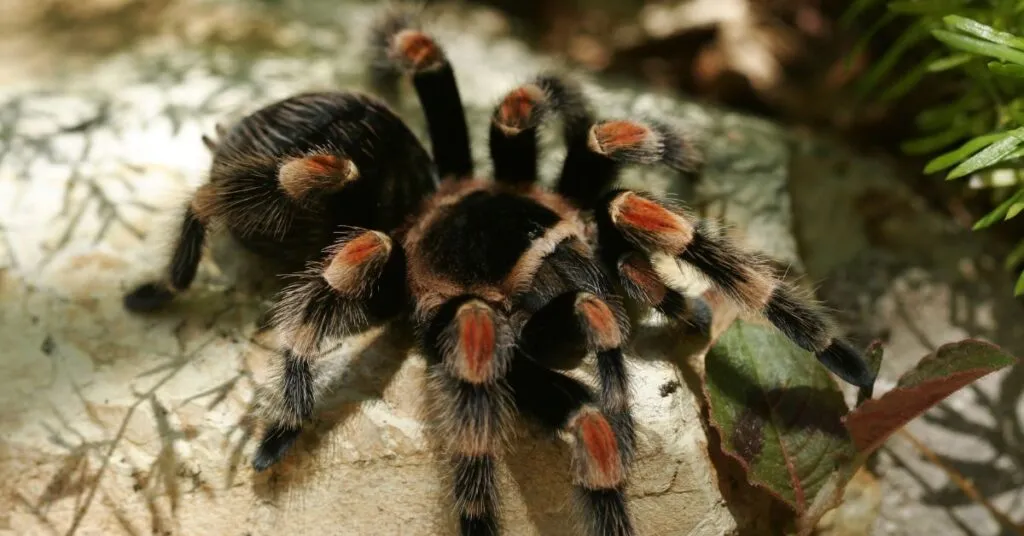
Molting is a natural and essential process for tarantulas. During molting, the tarantula sheds its exoskeleton to grow. The frequency of molting depends on the spider’s age and growth rate. Young tarantulas molt more frequently than adults. Before molting, the tarantula may stop eating, become lethargic, and its abdomen may appear darker or swollen. The molting process can take several hours, or even a day or two, and the spider will be very vulnerable during this time. It is crucial to provide a safe, undisturbed environment during the molting process. Avoid handling or disturbing the spider. After molting, the tarantula will be soft and vulnerable. Give it a few days to allow its fangs and exoskeleton to harden before feeding it. Understanding the molting process is crucial for responsible tarantula care and for ensuring the health of your pet.
Identifying Molting Signs
Recognizing the signs of an upcoming molt is important. Common signs include a decrease in appetite, lethargy, and the spider may spend more time in its hide. The abdomen may appear darker, swollen, or stretched. The tarantula might also build a web mat or block off its burrow. If you observe these signs, it’s a good indication that the tarantula is preparing to molt. Provide a quiet and undisturbed environment to minimize stress during this vulnerable time. Monitor the enclosure, but avoid unnecessary interference. Providing the right conditions during molting supports a healthy and successful molt.
Common Health Issues in Mexican Red Knee Tarantulas
While Mexican Red Knee Tarantulas are relatively hardy, they can still experience health problems. Some common issues include dehydration, fungal infections, and injuries. Prevention is key. Provide proper humidity, ensure clean water, and maintain a clean enclosure to minimize the risk of health problems. Watch for signs of illness, such as loss of appetite, lethargy, or unusual behavior. If you notice any health concerns, consult with a veterinarian experienced in exotic animals or a knowledgeable tarantula breeder. Early detection and intervention can improve the chances of a successful recovery. Proactive care helps ensure the long-term well-being of your pet.
Parasites and Mites

Tarantulas can be susceptible to parasites and mites. Mites are tiny, often red or brown, and can infest the tarantula’s body or the enclosure. Parasites can be internal or external. Regularly inspect your tarantula and its enclosure for signs of parasites or mites. If you suspect a parasite or mite infestation, consult with a veterinarian or experienced tarantula keeper. Treatment options may include improving enclosure hygiene, changing the substrate, or, in severe cases, medicated treatments. Maintaining good hygiene practices, inspecting your tarantula regularly, and promptly addressing any issues are important for preventing and treating parasitic infestations.
Preventive Care and Maintenance
Preventive care and maintenance are crucial for the long-term health of your Mexican Red Knee Tarantula. Regular tasks include spot cleaning the enclosure, removing uneaten food, and providing fresh water. Ensure the temperature and humidity are within the appropriate ranges. Monitor the tarantula’s behavior and appearance for any signs of illness or distress. Provide a varied diet and a clean, stimulating environment. Proper preventive care helps to minimize the risk of health problems. Consistent care makes tarantula ownership rewarding and contributes to the happiness and longevity of your pet.
Conclusion
Caring for a Mexican Red Knee Tarantula is a rewarding experience. By following this guide and understanding the needs of your tarantula, you can provide a healthy and enriching environment for your pet. From setting up the enclosure to feeding, hydration, and understanding molting, each step contributes to their well-being. Remember to prioritize their safety and avoid unnecessary handling. With proper care and attention, you can enjoy the beauty and fascinating behavior of your Mexican Red Knee Tarantula for many years to come. Enjoy the journey of tarantula ownership, and always continue to learn and adapt to ensure the best possible care for your amazing pet.
